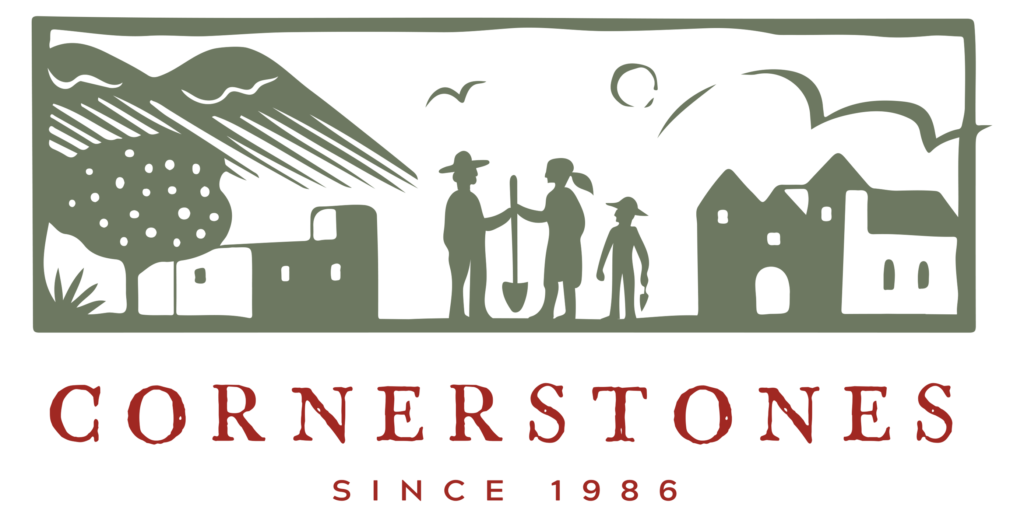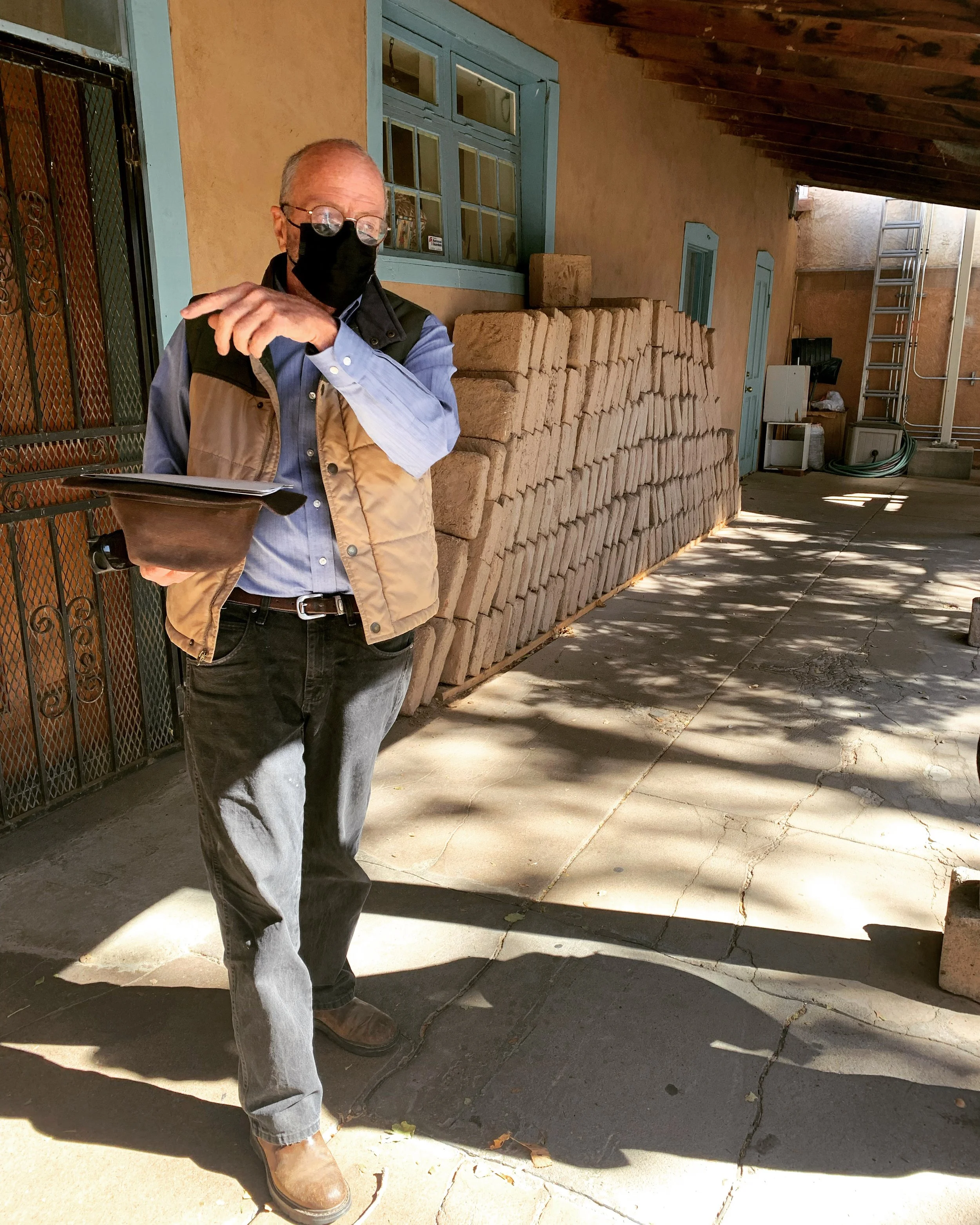Working on a Cornerstones project often presents surprises. Sometimes these are of another category, like being astonished or awed. For me an occurrence during the late summer of 2011 at San Miguel Chapel put me into another dimension. Our focus was San Miguel adobe wall repair and plastering of the north and east side of the nave which was part of our continuing project to preserve the entire exterior of the Chapel started in 2010. A Save Americas Treasures Grant and other donations funded the project. In 2011 the National Park Service, Vanishing Treasures Program (VT) provided special funding for training Pueblo youth in adobe conservation skills as a “hands on” “learn by doing” project. At the time we had Pat Taylor on our team who is a recognized expert in stitching adobe and all things adobe. We launched this workshop training with five youth, mostly Ohkay Owingeh trainees. One Navajo youth participated. The Ohkay Owingeh center village rehabilitation project was just beginning to take off, so the coincidence of our training program was precipitous. In that project the Pueblo has embarked on a multi-year strategy to rehabilitate the historic center village back into use as a contemporary living place. The center village is built entirely of adobe. The youth being supported by VT funds were also some of the same youth employed on the pueblo project.
One requirement of these VT funds was to provide honoraria for an elder from the Pueblo to participate with the youth to bring cultural context to their work. The concept was based on an idea that the youth would learn the historical and cultural context of the housing project and the significance of adobe construction in their history. The agreement made it clear that this involvement was to be in the purview of the Pueblo, and we might or might not know anything about it. The partnership allowed for a flexible schedule so the trainees could go back and forth between the two projects. Adobe wall repairs take a few days to dry, so the arrangement provided a full work week for trainees and worked very well for both projects.
Work on San Miguel in 2010-11. Click to enlarge.
The north wall of San Miguel had two very intense structural concerns. At the southwest front corner we removed old stucco and uncovered a large section of fired brick that had been set into the deteriorated adobe corner as a substitute for adobe. In discovering this our supposition was that during a repair campaign, either in the 1887 reconstruction or a later intervention, adobe was not “au currant” in the building spectrum and the workers of the time chose fired brick laid in cement mortar to stitch the corner. All our San Miguel repairs were to be traditional using only hand-made adobe and natural materials for mortars. We want to achieve structural continuity across any repairs using like materials. The brick represented a structural discontinuity. Simply stated this rigid block of masonry creates a non-compatible separation of structural sections. Being at a corner this situation was completely unacceptable to our team. We supported the roof and braced the walls and removed the brick. Deteriorated adobe associated was removed. Painstaking, step by step, adobe by adobe was placed back into the wall with structural connections at every adobe joint. New built into old in such a way as the dead load of the wall is always transmitted into adobe below. A second finding was a vertical crack running almost entirely through the wall at the juncture of the nave and apse. The crack extended from the base of the wall all the way to the parapet. Adobe by adobe, section by section a team member stitched this crack back together. These two challenges took most of the summer to repair. This constituted the core of the training curriculum. The work was going very well, and we could accomplish adobe wall preparations for mud plaster in other areas of the elevation with our volunteers.
One workday morning in late summer when I drove up to the rear of the Chapel, where we routinely staged work, I encountered a situation I was unprepared for. The team was standing in a semi-circle around a man dressed in Pueblo attire who was conducting a ceremony. A column of smoke was rising from a small bowl set on a parking bollard. I pulled over and joined a handful of people who had stopped to observe. Everyone was very quiet and attentive as the elder (I realized by this time that this was a situation of the tribal elder leading the youth in a prayer ceremony) spoke in Tewa to the youth. Having watched a number of Puebloan ceremonies over the years, I realized the solemnity of this happening. He spoke for some time and reached a conclusion. He then recognized the few non-natives of us who were observing and translated into English, still speaking to the youth. As is so often the case in these translations, the English is always much shorter than when spoken in native tongue. I always guess that much of what is said probably does not translate well into English. He explained that the work being undertaken was, in part, a reconciliation process. During the revolt of 1680, their ancestors had participated in the destruction of San Miguel. And now some 321 years later these youth were working on making repairs to age old damages. A thread of time that connects over centuries was suddenly brought to light in his prayer. My eyes were opened a little wider that day. I had a new appreciation for our work and the way it was being accomplished.
This the first of a series of "From the Field" columns that will appear bi-monthly in the Mud Blast. The reportage will come from Program Director Jake Barrow and other Cornerstones field staff who are working on preservation projects throughout the Southwest. We hope you enjoy this first installment.


